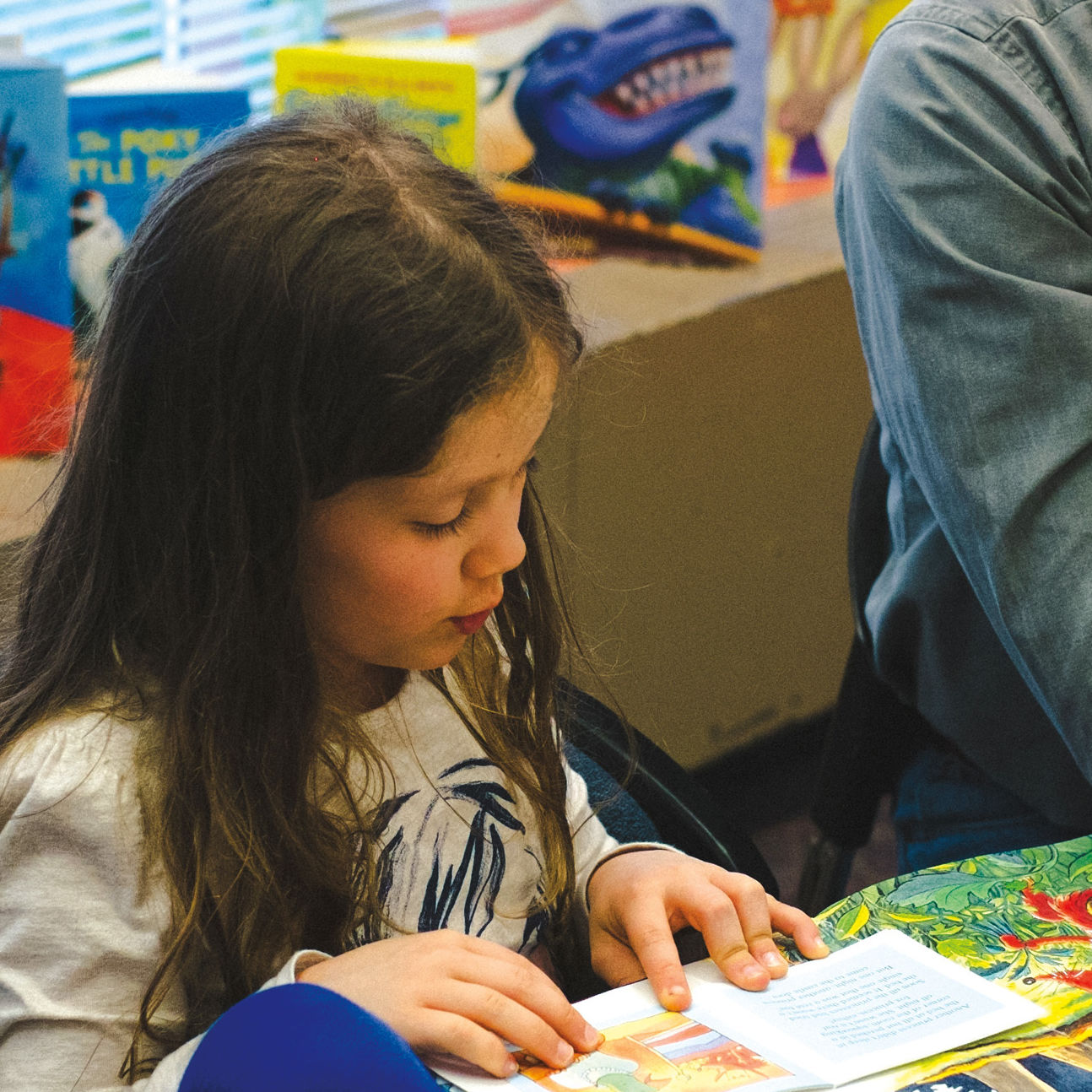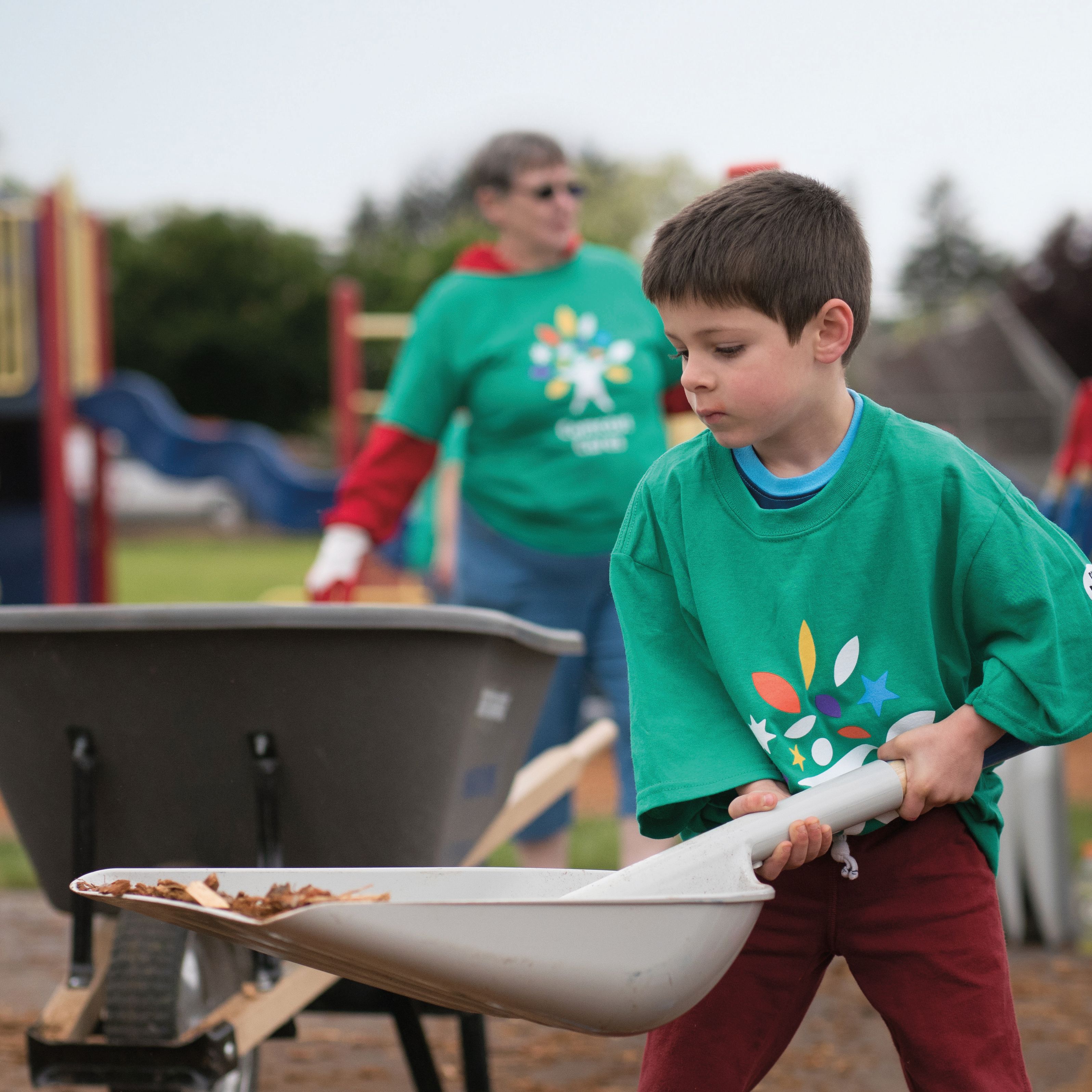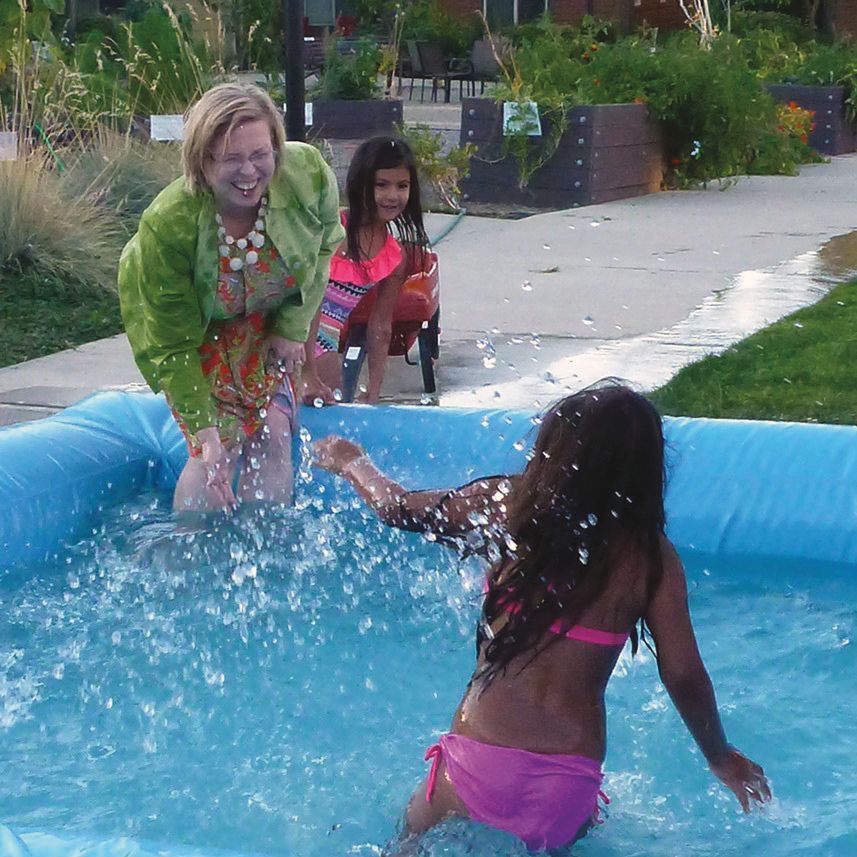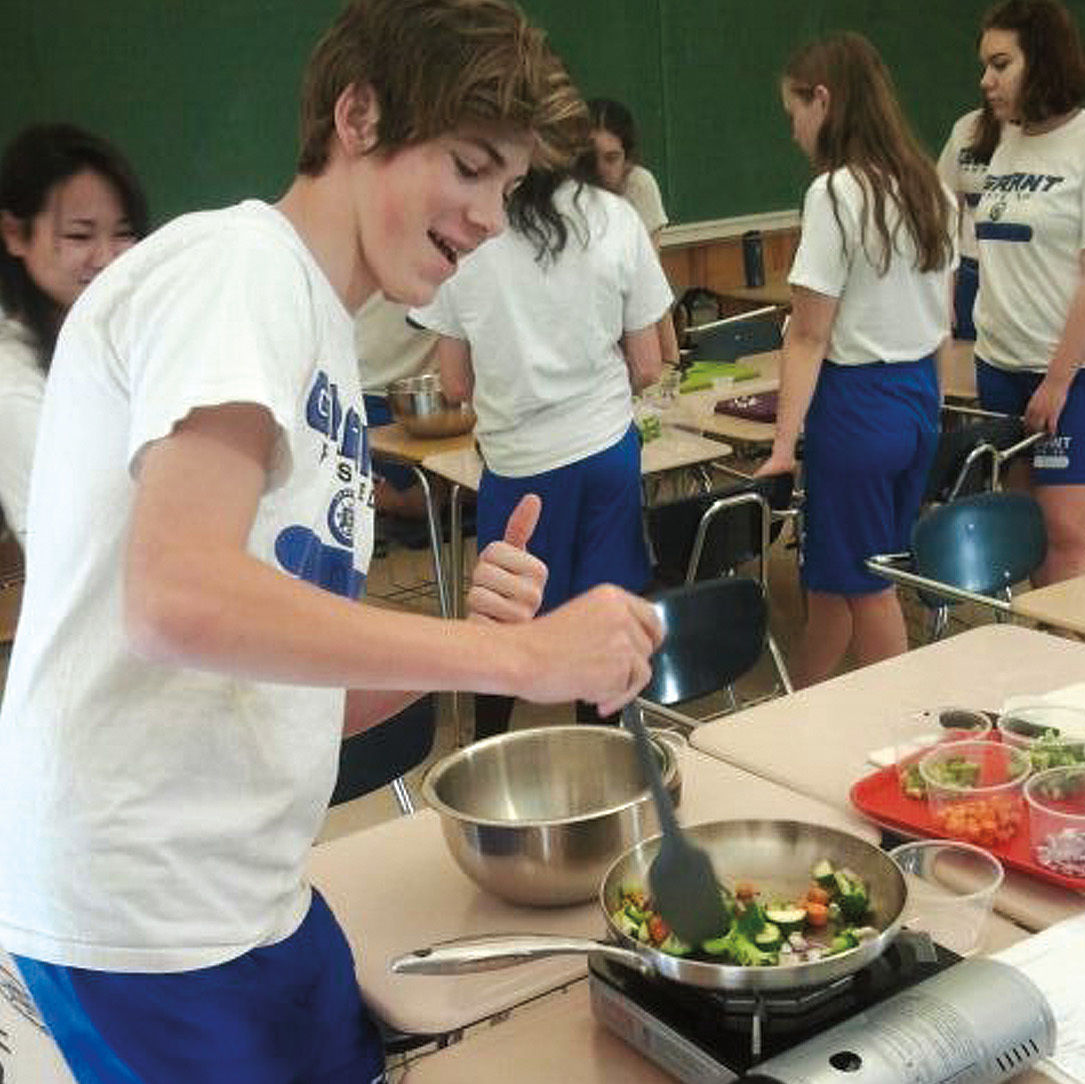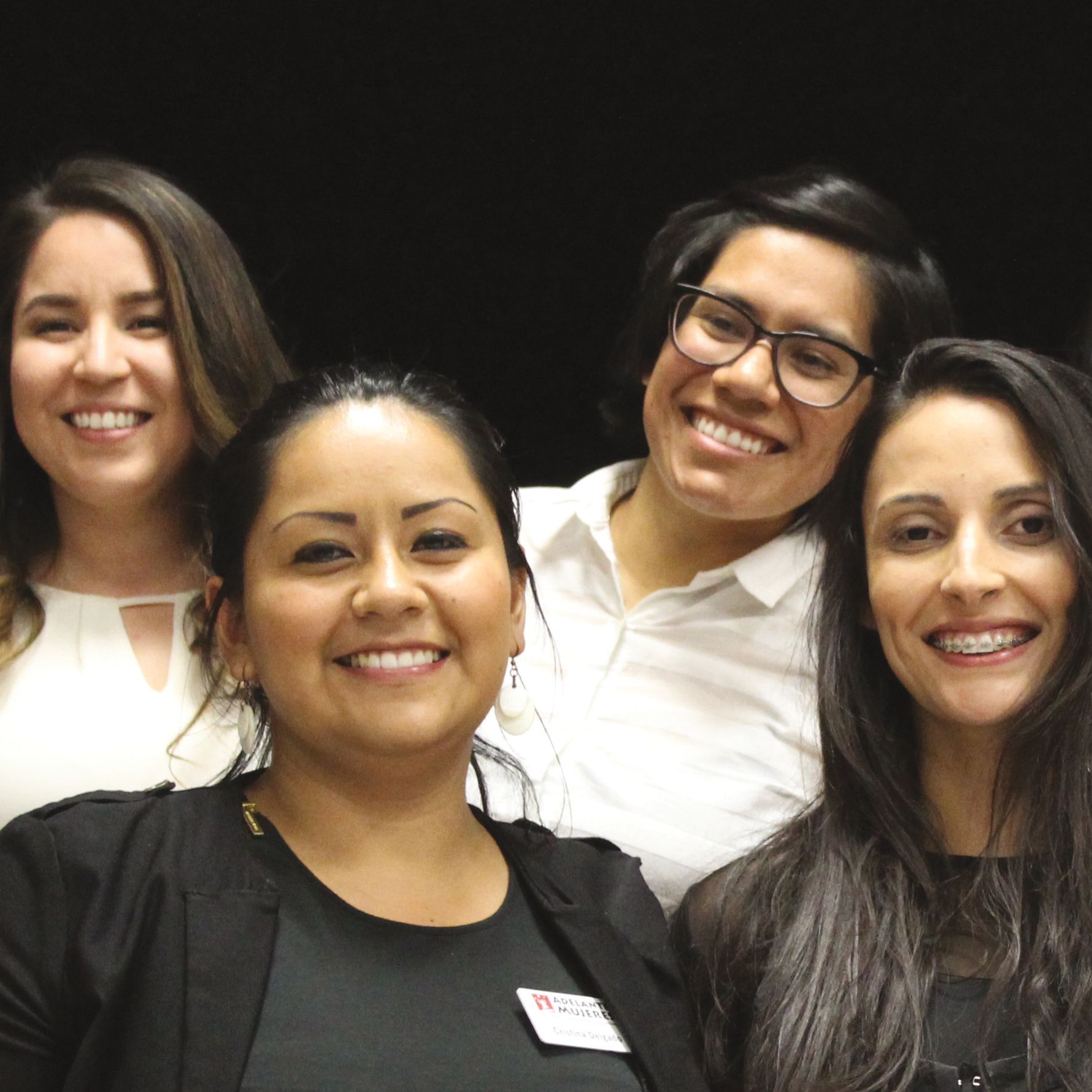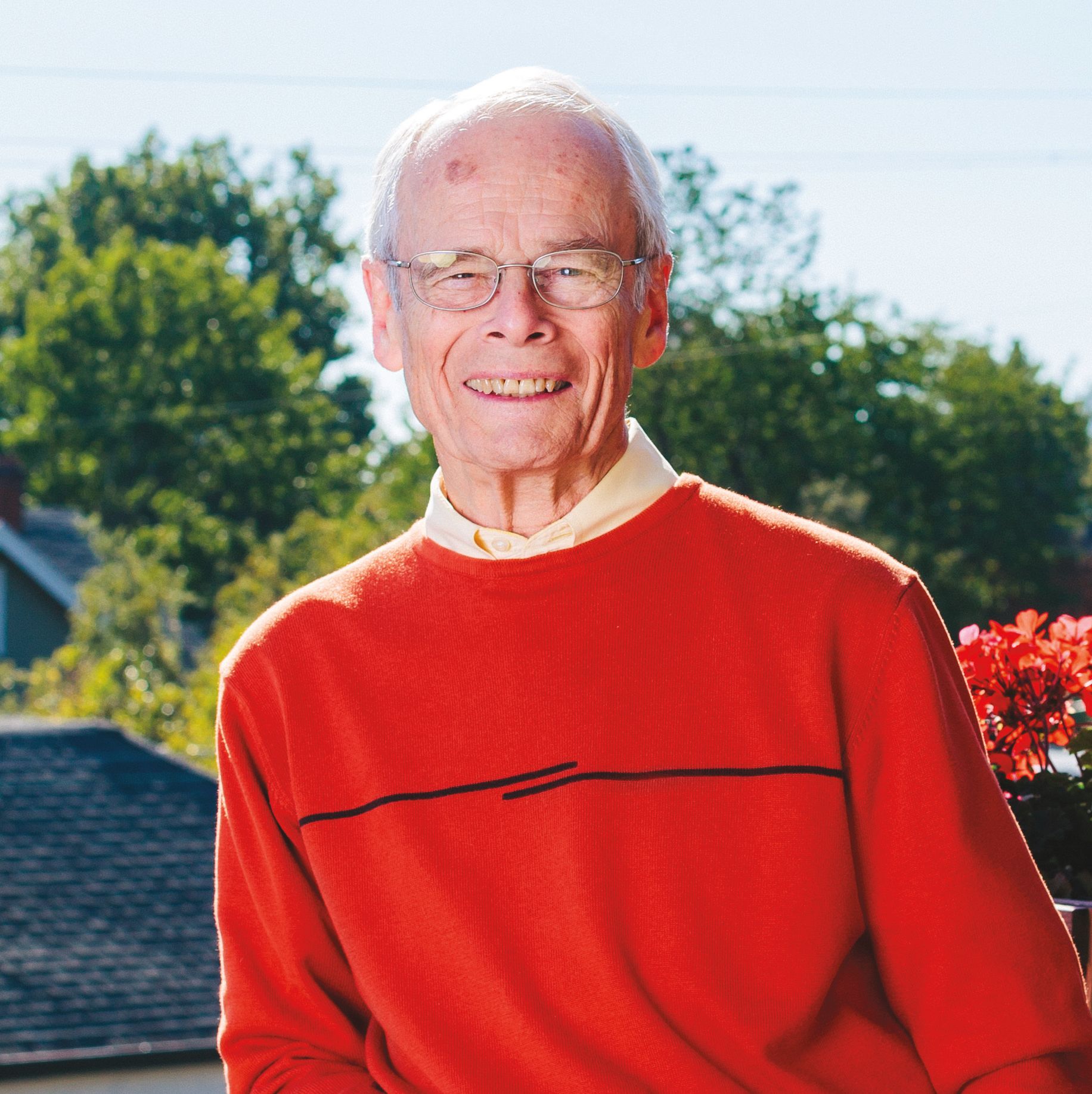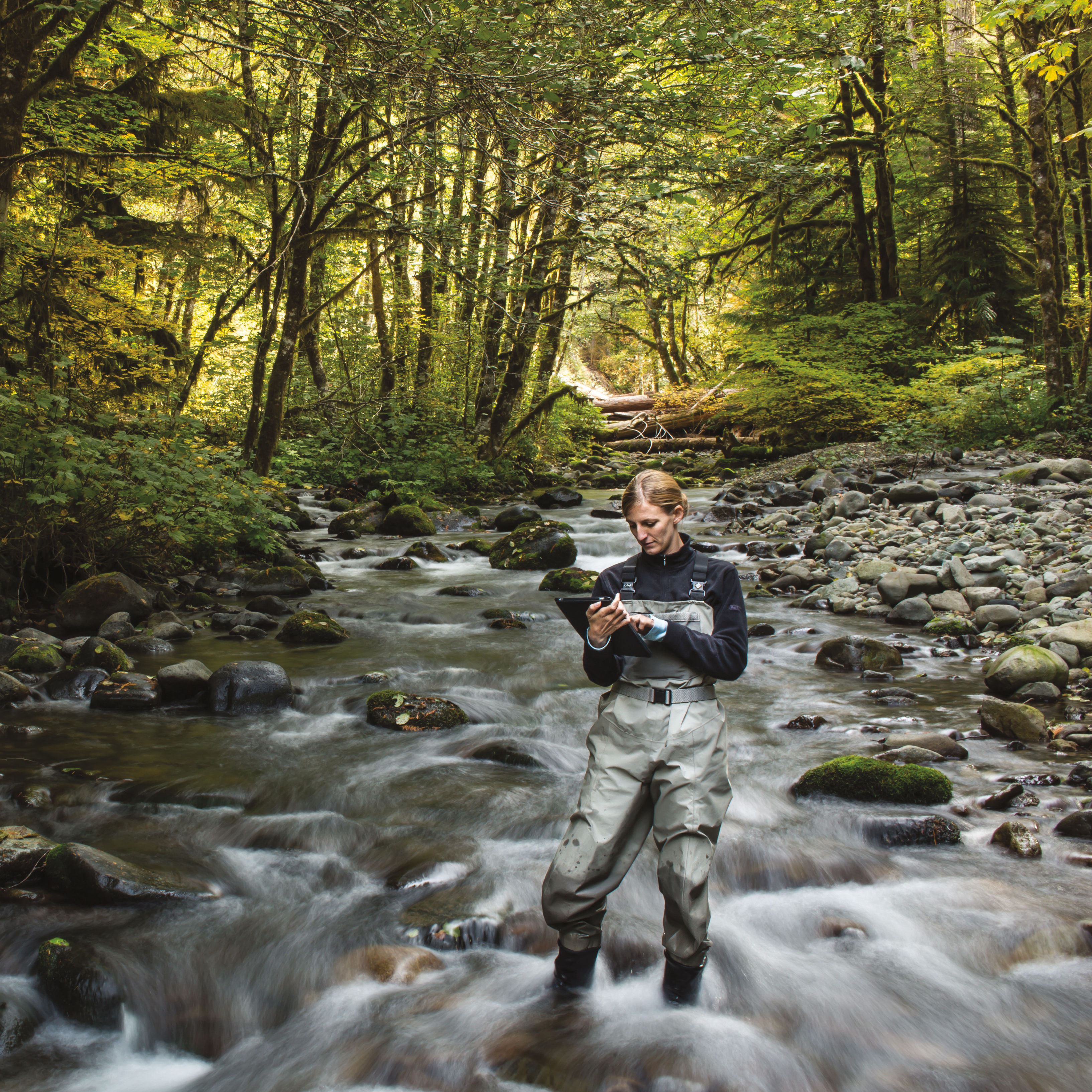Meet the Volunteer Tattoo Remover Changing Young People’s Lives
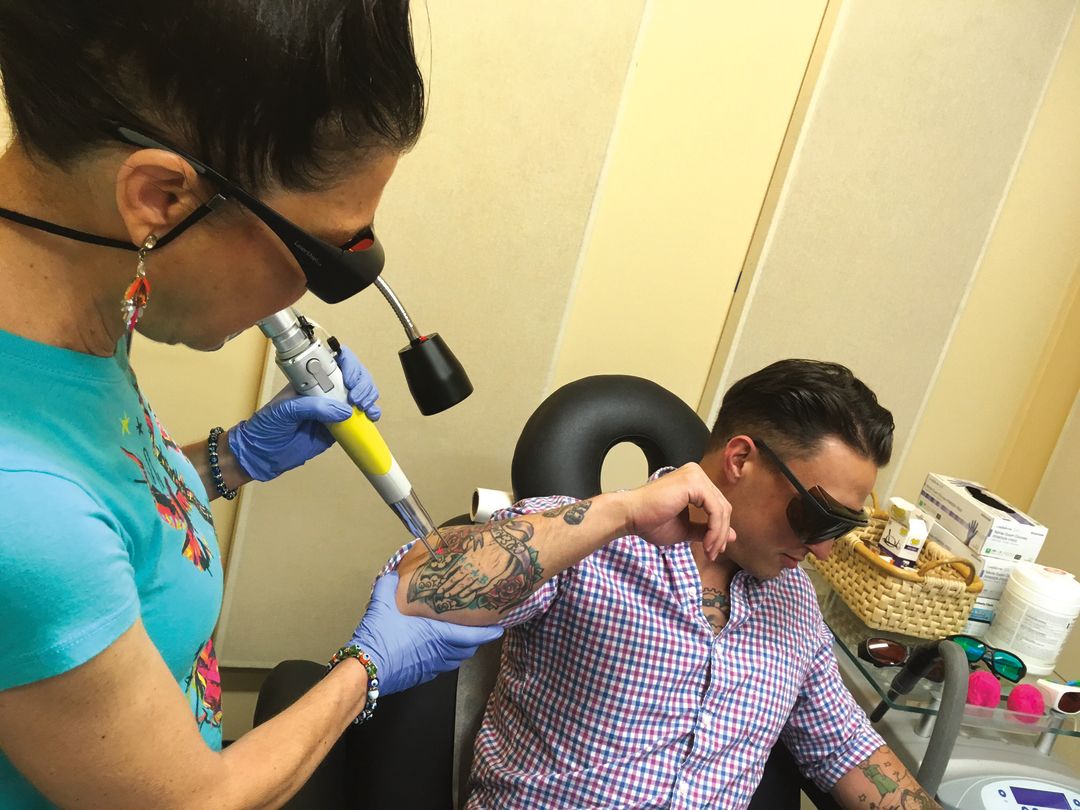
Image: Courtesy Outside In
In the 14 years Lesley Segal has volunteered at Outside In’s Project Erase tattoo removal program, she’s seen it all. Women who escaped pimps but remained branded on their necks with their pimps’ symbols. A seventh grader who carefully put Band-Aids over his face everyday because he wasn’t allowed back at school while the gang-associated marks next to his eye were visible. A young man whose hand was covered in scars from a rival gang member’s attempt to burn off his tattoo with a cigarette lighter. But, despite the melancholy of these tales, Segal remains almost impossibly hopeful.
“I was taking the prison-gang swastika off of a man,” she recalls. “He had a Jewish employer who said, ‘I believe in you. I am going to give you a job and get this off.’ And they worked it out together.”
An internal medicine doctor at Providence Portland by day, Segal estimates she has worked on 10 tattoos per month during her decade-plus at Outside In. Tattoo removal is typically one of the last steps of rehabilitation from drugs, gangs, or prostitution—and, as such, an important symbolic marker of someone’s progress. People who qualify for the program often even make the sessions family affairs as they celebrate the chance to start anew.
“There’s a whole culture of why it is so important to get these off,” Segal says. “It makes such a difference in their lives, but mostly it is about how they look at themselves. That they are leaving their horrible pasts behind. It’s for themselves, for their own empowerment, so they can be the directors of their future rather than the tattoos of their past.”
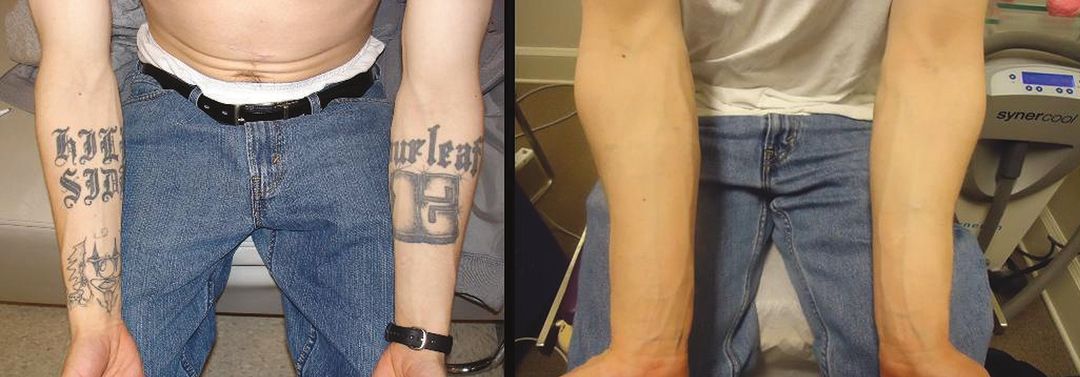
Before and after Outside In's tattoo removal process
Image: Courtesy Outside In
How Tattoo Removal Works
Outside In uses a Quanta Q+C laser to remove tattoos over multiple sessions that are six to eight weeks apart. The charged beam of light shoots through the skin’s surface to the ink, breaking up large clumps of ink into tiny particles. The body’s immune system then flushes away the small particles. “Depending on the size of the tattoo, the process can take up to a half hour, and it takes at least 10 sessions,” Segal says. “We have to rely on people donating old lasers. Our lasers keep getting better. We’ve had some bad ones over the years, but now we have a really good one.”

